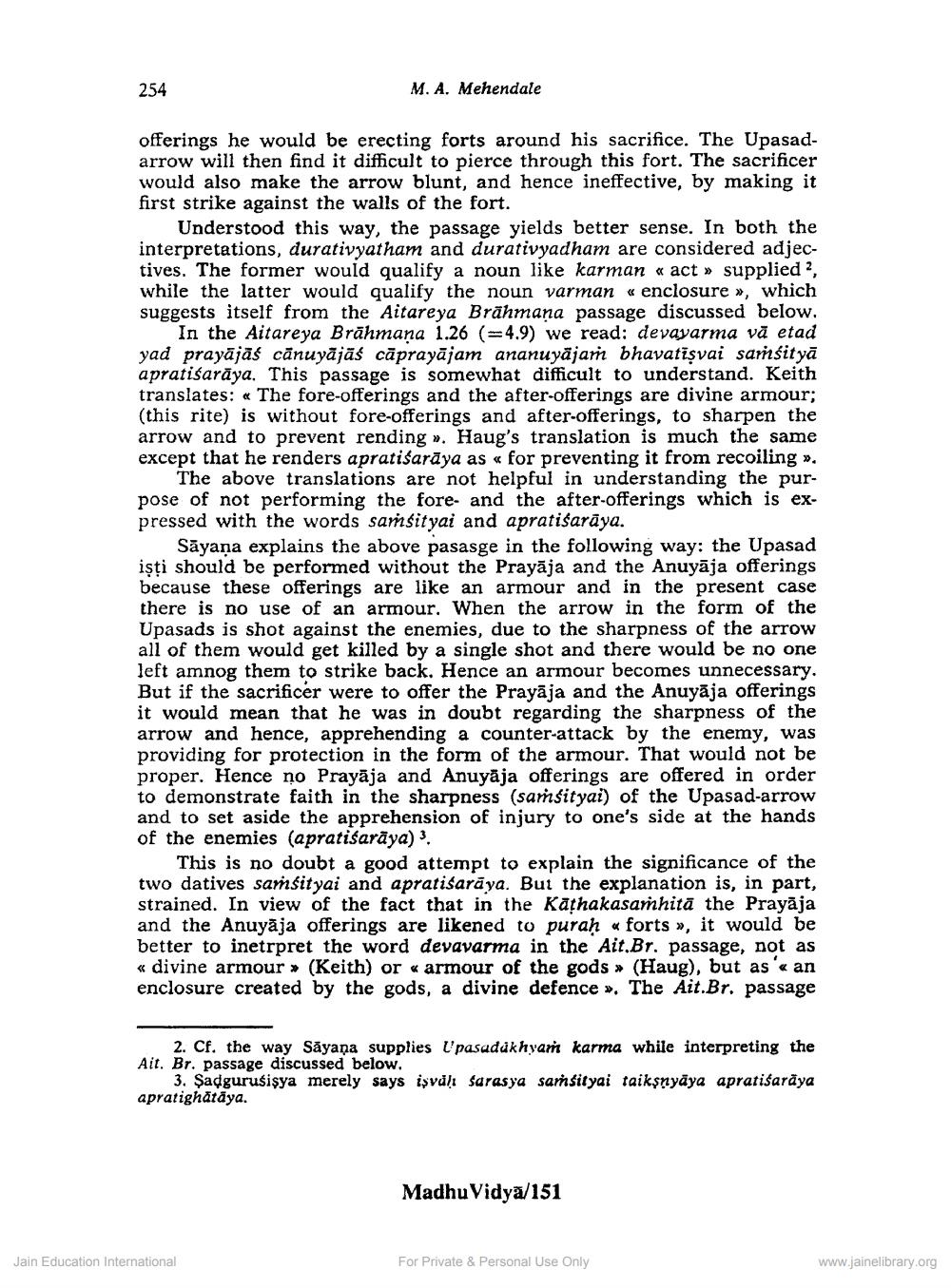________________
254
M.A. Mehendale
would be difficult to pierce thence ineffecti
offerings he would be erecting forts around his sacrifice. The Upasadarrow will then find it difficult to pierce through this fort. The sacrificer would also make the arrow blunt, and hence ineffective, by making it first strike against the walls of the fort.
Understood this way, the passage yields better sense. In both the interpretations, durativyatham and durativyadham are considered adjectives. The former would qualify a noun like karman «act >> supplied ?, while the latter would qualify the noun varman «enclosure », which suggests itself from the Aitareya Brāhmana passage discussed below.
In the Aitareya Brāhmana 1.26 (=4.9) we read: devayarma vā etad yad prayājās cānuyājāś căprayājam ananuyāja bhavatisvai sarsityā apratisarāya. This passage is somewhat difficult to understand. Keith translates: « The fore-offerings and the after-offerings are divine armour; (this rite) is without fore-offerings and after-offerings, to sharpen the arrow and to prevent rending ». Haug's translation is much the same except that he renders apratisarāya as <for preventing it from recoiling »
The above translations are not helpful in understanding the purpose of not performing the fore- and the after-offerings which is expressed with the words samsityai and apratisarāya.
Sāyaṇa explains the above pasasge in the following way: the Upasad işti should be performed without the Prayāja and the Anuyāja offerings because these offerings are like an armour and in the present case there is no use of an armour. When the arrow in the form of the Upasads is shot against the enemies, due to the sharpness of the arrow all of them would get killed by a single shot and there would be no one left amnog them to strike back. Hence an armour becomes unnecessary. But if the sacrificer were to offer the Prayāja and the Anuyāja offerings it would mean that he was in doubt regarding the sharpness of the arrow and hence, apprehending a counter-attack by the enemy, was providing for protection in the form of the armour. That would not be proper. Hence no Prayāja and Anuyāja offerings are offered in order to demonstrate faith in the sharpness (sarsityai) of the Upasad-arrow and to set aside the apprehension of injury to one's side at the hands of the enemies (apratiśarāya)".
This is no doubt a good attempt to explain the significance of the two datives saṁsityai and apratisarāya. But the explanation is, in part, strained. In view of the fact that in the Kathakasarhitā the Prayāja and the Anuyaja offerings are likened to puran «forts », it would be better to inetrpret the word devavarma in the Ait.Br. passage, not as « divine armour» (Keith) or <armour of the gods >> (Haug), but as an enclosure created by the gods, a divine defence ». The Ait.Br. passage
2. Cf. the way Sayana supplies U' pasadakhyar karma while interpreting the Ait. Br. passage discussed below,
3. Şadguruśişya merely says işval sarasya sarsityai taiksnyāya apratisarāya apratighātäya.
Madhu Vidya/151
Jain Education International
For Private & Personal Use Only
www.jainelibrary.org




